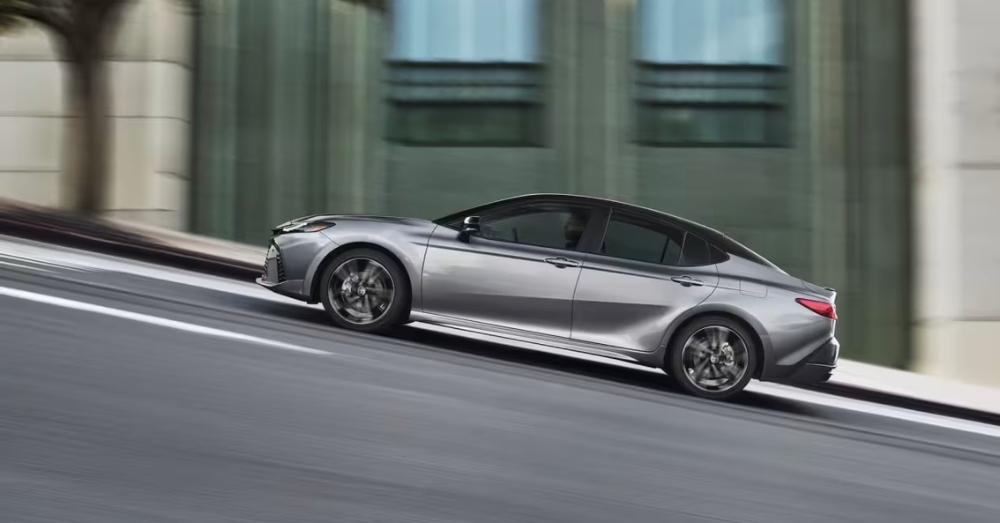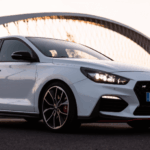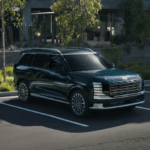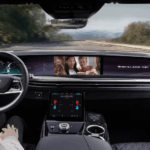Walk through any parking lot today and you’ll see the same story playing out everywhere – rows of SUVs and pickup trucks with maybe a handful of sedans scattered around. This isn’t just your imagination. The numbers back up what your eyes are telling you, and the shift keeps getting more dramatic every year.
- Compact SUVs dominate everything – Toyota RAV4 and Honda CR-V outsell most other vehicles combined
- Pickup trucks hold their ground – Full-size trucks still command the top spots after decades
- Sedans barely hang on – Once the default choice, they now fight for scraps
Compact SUVs Won the War
You want to know how completely compact SUVs took over? They now outsell large trucks AND midsize SUVs. The Toyota RAV4 moved 239,451 units in just the first half of 2025. The Honda CR-V wasn’t far behind at 212,561 sales. These aren’t flukes – they’re the new normal.
What makes them so popular? They check every box people actually care about. You sit higher than in a sedan, which feels safer when you’re surrounded by bigger vehicles. You can fit a week’s worth of groceries without playing Tetris. And unlike their bigger cousins, you can actually park them at the grocery store without taking up two spaces.
Ten years ago, most families drove sedans or minivans. Now crossovers grab over 45 percent of all new car sales. Car companies saw this coming and pumped out compact SUV after compact SUV. Smart move, because buyers eat them up.
Pickup Trucks Refuse to Budge
While SUVs conquered the suburbs, pickup trucks kept their stranglehold on America’s driveways. Ford F-Series trucks sold 412,848 units in the first half of 2025, keeping their title as the country’s best-selling vehicle for over 40 years running. That’s some serious staying power.
Here’s the plot twist, though – smaller trucks are stealing some thunder from their big brothers. The Ford Maverick jumped 26 percent in Q2 2025, proving lots of people want truck capability without the aircraft carrier size and price tag.
Think about it – the Maverick starts around $25,000, which is way less than a full-size F-150. If you need to haul some lumber on Saturday but don’t tow a 30-foot boat, why pay for more truck than you need? Ford figured this ou,t and buyers responded.
Sedans Fight for Their Lives
Here’s the brutal truth about sedans – they’re getting crushed. Passenger car sales fell 12.8% while light trucks kept climbing. Back in 2017, SUVs officially passed sedans in total sales for the first time ever. The gap just keeps growing.
But sedans aren’t completely dead yet. The Toyota Camry still sells well enough to crack the top 10 overall vehicle list. The Honda Civic and Toyota Corolla also move decent numbers, proving some people still value what sedans bring to the table.
Who’s still buying these things? Mostly folks who put gas mileage above everything else, or people who like how a lower car feels when taking corners. Sedan buyers tend to be pretty stubborn – they know what works for them and stick with it while everyone else climbs into SUVs.
Three-Row SUVs Fill the Gap
Parents with multiple kids face a tough choice. Do you squeeze everyone into a compact SUV and listen to them complain about space? Or do you jump straight to a monster SUV that’s impossible to park? Three-row midsize SUVs split the difference perfectly.
The Ford Explorer led this category in Q2 2025 with 57,615 sales, beating the Toyota Highlander and Chevy Traverse. These vehicles work because they give you room for seven people when your mother-in-law visits, but you can still fit in normal parking spaces the other 350 days of the year.
Families shop this segment carefully because they’re spending serious money. Whether you go with an Explorer, Honda Pilot, or Hyundai Palisade often comes down to which one has the specific features your family can’t live without.
Electric Cars Copy the Same Playbook
Electric vehicles are gaining steam, but they’re following the exact same patterns as gas cars. The Tesla Model Y leads the EV pack with an estimated 146,000 sales, while the Model 3 sedan sits way down the list. Even when people go electric, they still want SUVs over sedans.
This makes perfect sense. Buying an electric car doesn’t suddenly change how you live. If you needed cargo space and a commanding view of traffic before, you’ll want the same things from your EV.
Ford’s approach with the F-150 Lightning shows how smart companies handle this. Instead of trying to convince truck buyers to switch to electric sedans, they made an electric truck. Give people what they already want, just with a different power source.
What’s Behind All This
A few big forces are reshaping what Americans drive. Rising vehicle prices make people want the most versatility for their money. A compact SUV costs about the same as a comparable sedan but gives you way more usefulness.
How we work changed too. More people work from home now, which means your vehicle needs to handle weekend Home Depot runs and camping trips, not just the daily commute. That naturally favors trucks and SUVs over cars designed mainly for highway cruising.
Gas prices matter, but apparently not as much as you’d think. Most buyers seem willing to accept slightly worse fuel economy in exchange for more space and capability. The success of compact SUVs shows people want efficiency, just not at the expense of practicality.
Where We’re Headed
All signs point to SUVs and pickup trucks continuing their takeover of American roads. They grabbed 75% of total vehicle sales in 2024, and nothing suggests that trend will reverse anytime soon.
Rising prices might push buyers toward smaller options within these popular categories, though. Compact SUVs could steal even more sales from larger models, while trucks like the Maverick might pull buyers away from full-size pickups.
The recipe for success seems pretty straightforward – give buyers the SUV and truck features they want, but at prices they can actually stomach. Companies that nail this balance will probably clean up in the coming years.







Leave a Reply